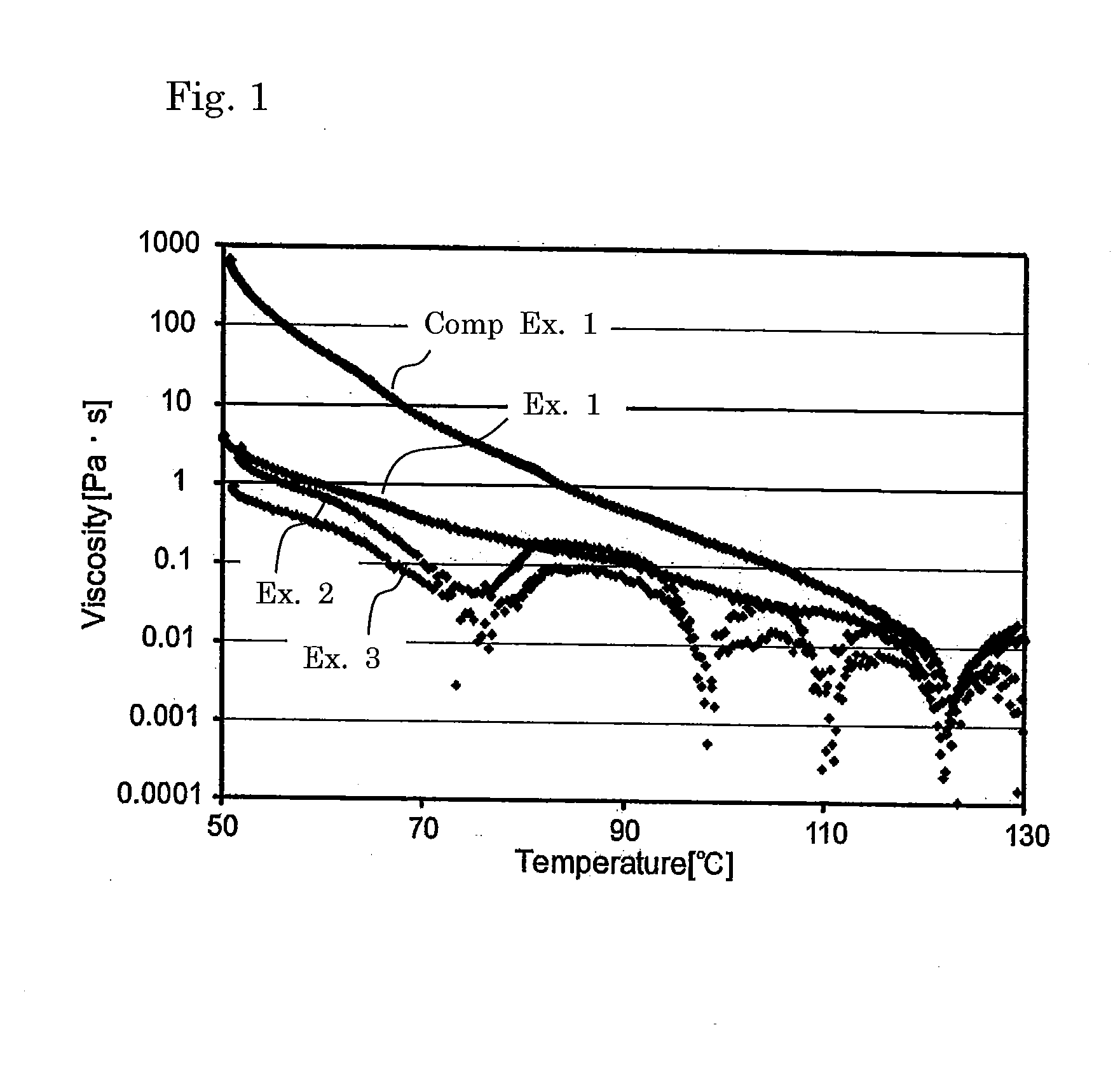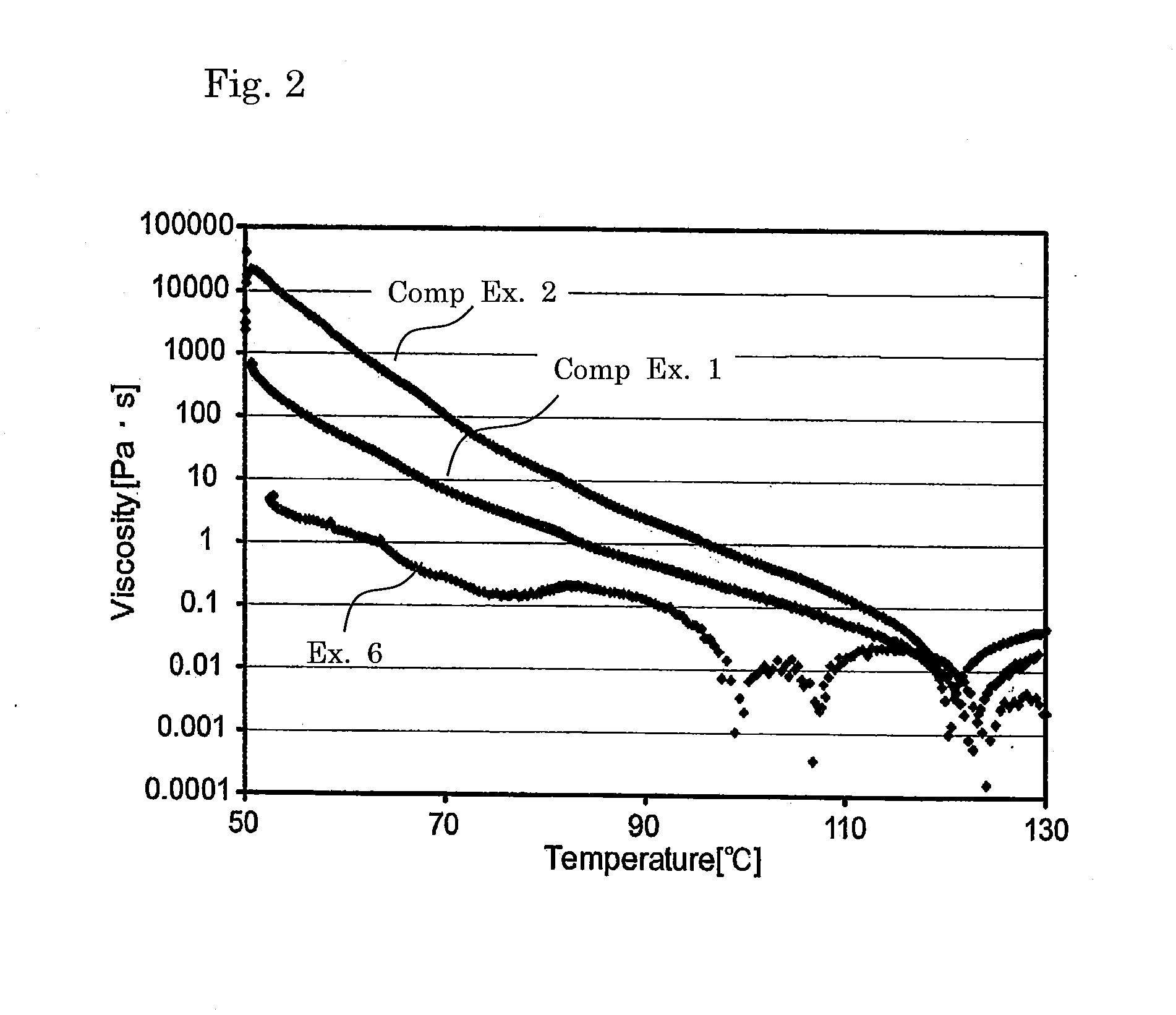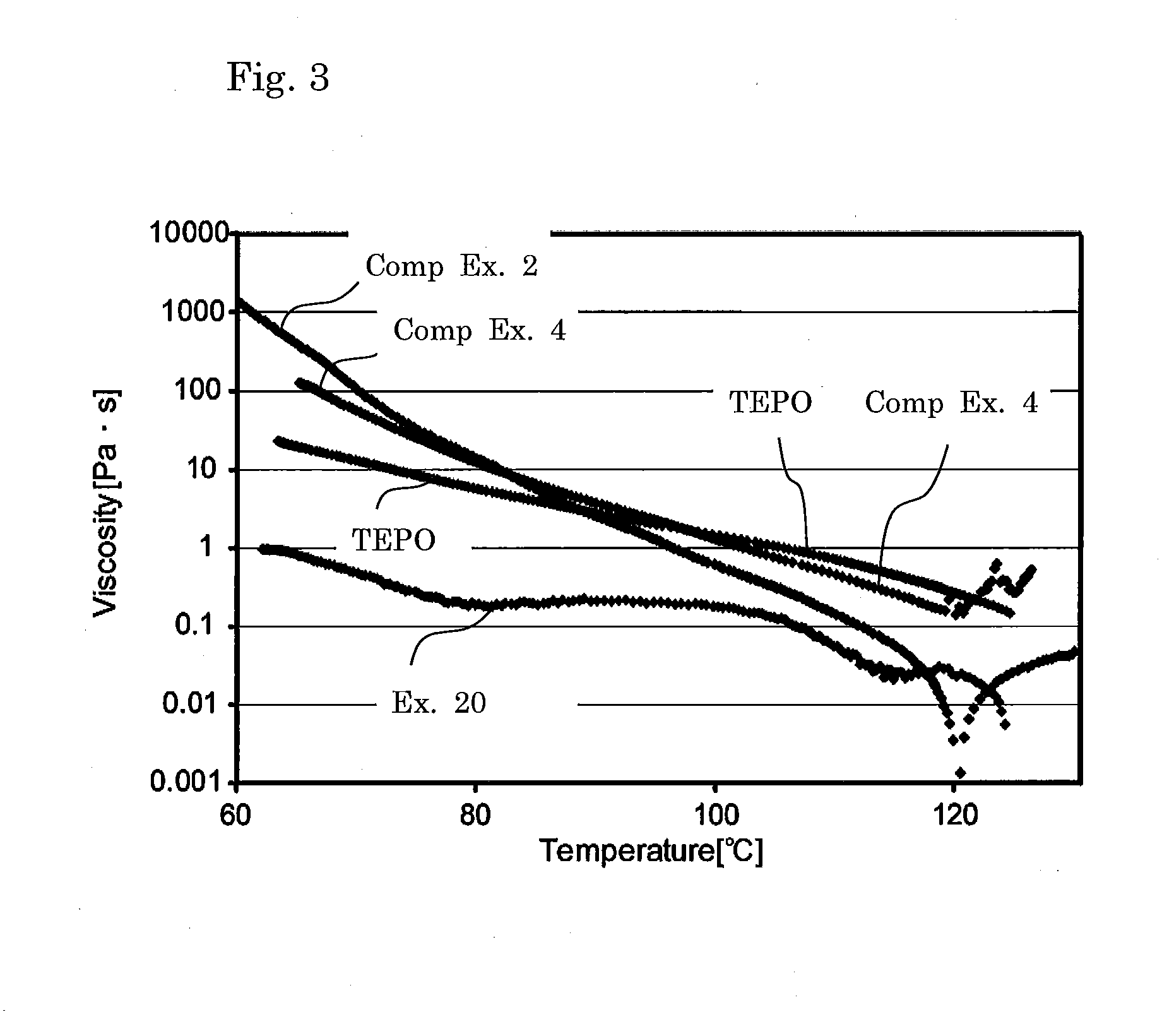Curable resin composition, cured product and method of producing a cured product
- Summary
- Abstract
- Description
- Claims
- Application Information
AI Technical Summary
Benefits of technology
Problems solved by technology
Method used
Image
Examples
example 1
[0150]As a matrix resin component ((a1) and (a2)), 100 parts by weight of a benzoxazine compound (the compound of the formula XV: 3,3′-(methylene di-4,1-phenylene)bis(3,4-dihydro-2H-1,3-benzoxazine)) and 30 parts by weight of a bisphenol A-type epoxy resin (DGEBA: bisphenol A diglycidyl ether) were mixed. The average SP value of this matrix resin component is 10.71. As the radically polymerizable component (b), n-butyl methacrylate and styrene were mixed in a molar ratio of 1:1. The weight average SP value of this radically polymerizable component is 8.7.
[0151]The matrix resin component and the radically polymerizable component were measured out 90% by weight and 10% by weight, respectively, which were sufficiently mixed together with further dicumyl peroxide (in amount of 1% by mole relative to the radically polymerizable component) at 50 to 80° C. to obtain a curable resin composition.
[0152]After stirring the mixture thoroughly, it was degassed and injected into a mold with 8 mm×1...
examples 2 to 4
[0153]Cured product samples were obtained in a similar manner to Example 1 except that the proportions of the matrix resin component and the radically polymerizable component were altered as shown in Table 1. Table 1 shows the composition and the evaluation results of physical properties.
example 5
[0156]As a matrix resin component (a), a benzoxazine compound (the compound of the formula XV: 3,3′-(methylene di-4,1-phenylene)bis(3,4-dihydro-2H-1,3-benzoxazine)) was solely used, whereas as the radically polymerizable component (b), the mixture of n-butyl methacrylate and styrene in a molar ratio of 1:1 was used in a similar manner to Example 1.
[0157]The matrix resin component and the radically polymerizable component were measured out 90% by weight and 10% by weight, respectively, which were sufficiently mixed together with further dicumyl peroxide (in amount of 1% by mole relative to the radically polymerizable component) at 50 to 80° C. to obtain a curable resin composition.
[0158]After stirring the mixture thoroughly, it was degassed and injected into a mold with 8 mm×15 mm×84 mm. The mold filled with the resin was heated in a stepwise manner for 1 hour at 120° C., 10 hours at 150° C. and 4 hours at 180° C. to obtain a cured product sample. Table 2 shows the composition and th...
PUM
| Property | Measurement | Unit |
|---|---|---|
| Temperature | aaaaa | aaaaa |
| Temperature | aaaaa | aaaaa |
| Fraction | aaaaa | aaaaa |
Abstract
Description
Claims
Application Information
 Login to View More
Login to View More - R&D
- Intellectual Property
- Life Sciences
- Materials
- Tech Scout
- Unparalleled Data Quality
- Higher Quality Content
- 60% Fewer Hallucinations
Browse by: Latest US Patents, China's latest patents, Technical Efficacy Thesaurus, Application Domain, Technology Topic, Popular Technical Reports.
© 2025 PatSnap. All rights reserved.Legal|Privacy policy|Modern Slavery Act Transparency Statement|Sitemap|About US| Contact US: help@patsnap.com



